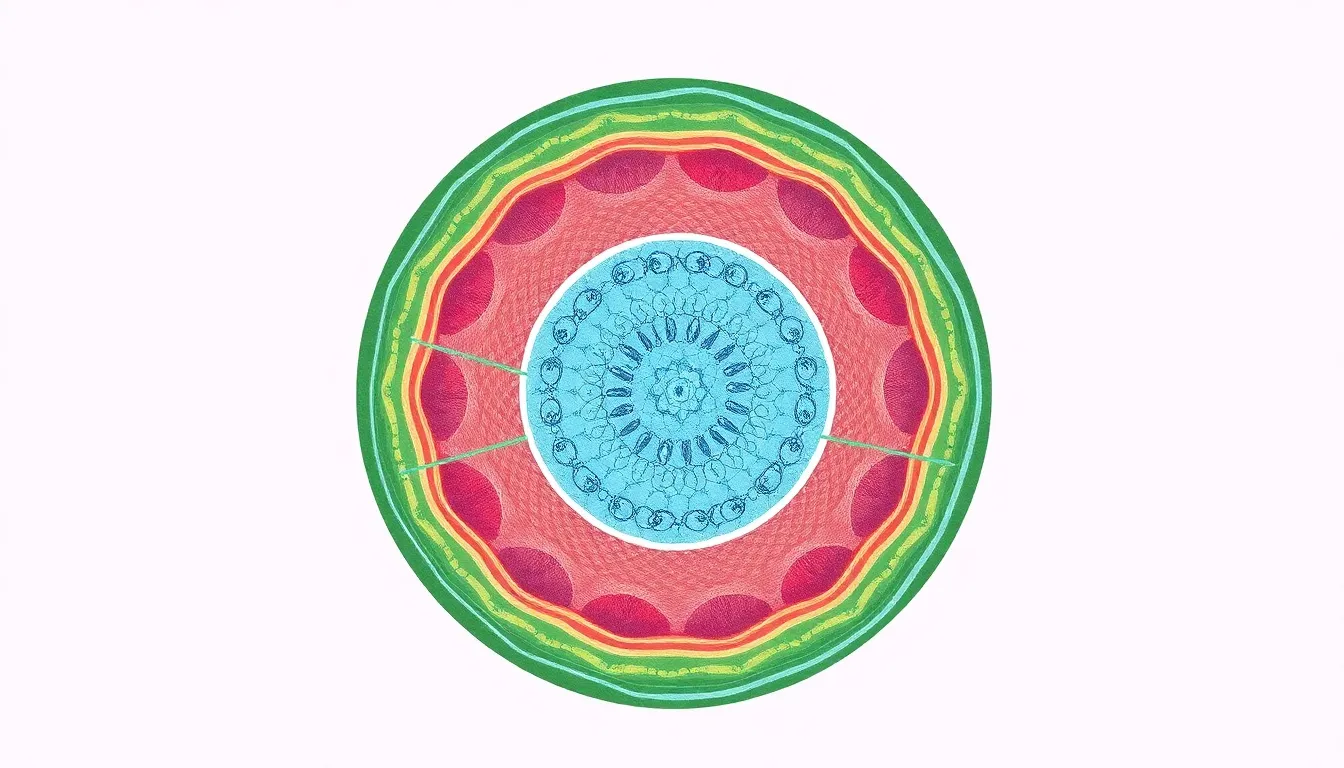In the bustling world of cellular biology, timing is everything, especially when it comes to the nuclear membrane. Imagine a dramatic unfolding of events where the protective barrier around the nucleus decides it’s time to take a vacation. That’s right! The nuclear membrane dissolves during a critical phase of cell division, specifically during prophase of mitosis.
But don’t let that sound too serious—after all, even cell membranes need a break. As the cell gears up for division, the nuclear membrane bids farewell, allowing the chromosomes to strut their stuff. So grab your lab coats and get ready to dive into the fascinating world of cell division, where the nuclear membrane’s temporary disappearance leads to the birth of new cells. Who knew biology could be this entertaining?
Table of Contents
ToggleOverview of the Nuclear Membrane
The nuclear membrane, also known as the nuclear envelope, surrounds the nucleus in eukaryotic cells. This double-layered structure consists of inner and outer membranes, creating a barrier that separates the contents of the nucleus from the cytoplasm. Proteins and lipids play significant roles in maintaining its integrity and functionality.
Chromosomes reside within the nuclear membrane during interphase, a period of preparation before cell division. This membrane serves as a selective barrier, regulating the entry and exit of molecules. RNA and proteins can pass through nuclear pores, which are embedded within the nuclear envelope, ensuring essential communication between the nucleus and cytoplasm.
During prophase of mitosis, the nuclear membrane dissolves, a critical event that allows chromosomes to condense and become visible. This dissolution initiates chromosome alignment along the cell’s equatorial plane. As the cell prepares to divide, the breakdown of the nuclear envelope ensures proper segregation of genetic material.
Post-division, the nuclear membrane re-forms around the separated sets of chromosomes during telophase. This reconstitution restores the distinct nuclear environment necessary for future cellular activities. Understanding the dynamics of the nuclear membrane emphasizes its critical role in cell division and gene regulation. The precise timing of its dissolution and reformation is crucial for successful mitosis.
Phases of Cell Division

Cell division consists of distinct phases. Each phase plays a crucial role in the overall process of cellular replication.
Interphase
Interphase is the longest phase in the cell cycle, lasting about 90% of the total duration. Cells undergo significant growth during this period. They replicate DNA to prepare for mitosis. Organelles and other cellular structures duplicate as well. This phase includes three stages: G1, S, and G2. G1 focuses on cell growth and metabolic activity, while S is dedicated to DNA synthesis. G2 ensures the cell is ready to enter mitosis. Overall, interphase establishes the foundation for successful cell division.
Mitosis
Mitosis follows interphase and involves several stages, including prophase, metaphase, anaphase, and telophase. The cell’s nuclear membrane dissolves during prophase, exposing the chromosomes. Chromosomes become visible as they condense. During metaphase, these chromosomes align at the cell’s equatorial plane. Anaphase then separates sister chromatids, pulling them toward opposite poles. Telophase marks the reformation of the nuclear membrane around separated chromosomes. The completion of mitosis results in two daughter cells, each possessing a complete set of genetic material.
The Process of Nuclear Membrane Dissolution
The dissolution of the nuclear membrane is a crucial event during cell division. It occurs primarily during two phases of mitosis: prophase and prometaphase.
Prophase
Prophase marks the beginning of mitosis. During this phase, the nuclear membrane begins to break down, allowing for chromosome visibility. Chromosomes condense and become distinguishable structures, essential for accurate segregation later in the process. Microtubules start to form, which will ultimately facilitate chromosome movement. The transition into this phase signals that the cell is preparing for division. As chromatin becomes visible, the cell’s readiness to undergo mitosis becomes clear, setting the stage for subsequent events.
Prometaphase
Prometaphase follows prophase, representing a critical period in mitosis. The nuclear membrane almost completely dissolves during this phase, providing a pathway for spindle fibers to connect to chromosomes. Chromosomes, now fully condensed, begin to align along the metaphase plate. Kinetochores form at the centromeres, anchoring the spindle fibers necessary for chromosome movement. This alignment ensures that genetic material separates correctly into daughter cells. Without this precise process, the fidelity of cell division would be compromised, highlighting the importance of nuclear membrane dissolution in successful mitosis.
Factors Influencing Nuclear Membrane Dissolution
Nuclear membrane dissolution is influenced by several factors, including genetic regulation and environmental conditions.
Genetic Regulation
Genetic factors play a crucial role in the timing of nuclear membrane dissolution. Specific proteins, such as cyclins and cyclin-dependent kinases, regulate cell cycle progression. These proteins activate processes essential for prophase and prometaphase. Mutated or overexpressed genes can disrupt normal timing, leading to abnormal cell division. Also, checkpoints within the cell cycle ensure that division occurs only when appropriate, preventing premature dissolution. Understanding these genetic influences provides insight into the intricate mechanisms governing cell division and their implications for diseases, like cancer.
Environmental Factors
Environmental conditions significantly impact nuclear membrane dissolution. Factors such as temperature, pH, and nutrient availability can alter cellular processes. Under stress conditions, cells may respond differently during the cell cycle. For example, nutrient deprivation can lead to delayed mitosis, impacting the timing of membrane breakdown. Additionally, exposure to toxins may trigger stress responses, affecting the integrity of the nuclear envelope. These environmental influences underscore the connection between external conditions and cellular behavior, highlighting how they shape nuclear membrane dynamics.
The dissolution of the nuclear membrane during prophase marks a pivotal moment in cell division. This process not only allows chromosomes to become visible but also sets the stage for their precise alignment and separation. Understanding the timing and factors influencing this phenomenon offers valuable insights into cellular mechanics and their broader implications. As researchers continue to explore the intricacies of cell division, the fascinating interplay between genetic regulation and environmental conditions remains a critical area of study. Recognizing the significance of nuclear membrane dissolution enhances appreciation for the complexity of life at the cellular level.


